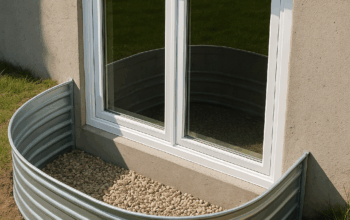Ordering new windows? Before you start dreaming about styles and finishes, there’s one step that will make or break the whole project: getting the measurements right. And here’s why it matters – according to industry data, nearly 1 in 4 custom window orders are delayed or require costly adjustments due to incorrect measurements, and because most custom windows are non-refundable, even a ¼-inch error can cost homeowners hundreds of dollars.
Even being off by a fraction of an inch can mean the difference between a perfect fit and a window that lets in drafts – or worse, one that doesn’t fit at all.
The good news? Measuring for replacement windows is straightforward if you follow a methodical process. With a tape measure, a notepad, and a little patience, you can get accurate numbers and avoid costly surprises.
Why Precise Measurements Matter
- Perfect fit: The window should slide into the opening without large gaps or awkward adjustments.
- Energy efficiency: A snug fit means an airtight seal – keeping heat in during winter and out during summer.
- Avoiding expensive mistakes: Custom windows are often non-refundable. One wrong measurement can waste time and money – sometimes requiring the order to be remade and lead times doubled.
- Smooth installation: When the size is spot-on, installation is quicker and easier.
Replacement vs. New Construction Measurements
| Feature | Replacement (Insert) | New Construction |
| What You Measure | Inside of existing frame – jamb to jamb (width) and head to sill (height) | Rough opening between wall studs |
| When used | Keeping the frame and trim, swapping only the window unit | Full frame replacement or building new walls |
| Purpose | Fit snugly inside existing frame | Install with nailing fin directly to studs |
| Complexity | Simple, from inside | More complex – remove trim to access studs |
Tools You’ll Need
- 25-foot steel tape measure – with a straight, undamaged tip for accuracy
- Notepad and pen – write down and label each measurement immediately
- Level (optional) – check for sloping sills or out-of-square frames
Step-by-Step: How to Measure Your Window
1. Measure the width
- Measure from jamb to jamb (inside frame) at the top, middle, and bottom.
- Record all three, then use the smallest number as your official width.
2. Measure the height
- Measure from the head (top) to the sill (bottom) at the left, middle, and right.
- Again, record all three and use the smallest.
3. Measure the depth (if needed)
- Measure from the inside trim edge to the outside trim edge. This ensures your new window sits flush, not sticking out or recessed too far.
4. Check for squareness (optional)
- Measure diagonally from top left to bottom right, then top right to bottom left.
- If the numbers differ by more than ¼ inch, the frame is out of square – important to note for your installer.
Mistakes to Avoid
- Measuring only once: Always take three measurements for both width and height.
- Writing numbers incorrectly: Double-check before moving on.
- Measuring the sash or glass instead of the frame: Always measure the opening.
- Rounding measurements: Provide exact numbers down to 1/16 inch.
DIY vs. Hiring a Pro
Doing it yourself saves money and works well for simple, standard openings. But when a window company measures, they take the responsibility – if the fit is wrong, they fix it at their expense. For large, costly windows or tricky frames, that peace of mind can be worth the extra cost – especially since custom orders can take 6-12 weeks, and mistakes can push delivery to over 16 weeks (Soco Windows & Doors)..
FAQ – Measurement Basics
1. How do I make sure my new window actually fits?
The secret is to measure in more than one spot. Always take the width at the top, middle, and bottom – and do the same for the height. Frames aren’t always perfectly square, and even a small difference can mean gaps, drafts, or worse, a window that just won’t go in. The golden rule: write down all three numbers and go with the smallest.
2. Do I really need more than a tape measure?
Most of the time, a steel tape, a notepad, and a pen are all you’ll need. A level is a nice bonus if you want to see if your sill is sloping, but it’s not a must-have. The key is keeping your notes organized – labeling each number right away so you don’t have that “wait, was this the top or bottom?” moment later.
3. Can’t I just measure the glass and call it a day?
Nope – that’s one of the biggest mistakes people make. The glass doesn’t tell the whole story because the frame and sash take up space. What you really need is the inside measurement of the frame itself, from jamb to jamb and head to sill. That’s the only way to guarantee the window slides in snug.
4. Is it worth hiring a pro to measure for me?
If your windows are standard and you’re comfortable with a tape measure, DIY measuring is fine. But for large or custom orders, it can be worth letting the pros handle it. Here’s why: if they take the measurements, they also take the responsibility. If something’s wrong, they fix it – not you. That peace of mind can save a lot of stress, especially when mistakes can delay delivery by weeks.
Conclusion
Accurate measurements are the foundation of a successful window replacement. Take your time, be precise, and write everything down. Once you have the right numbers, you can move on to the fun part – choosing a window style that brings more light, comfort, and efficiency into your home.




